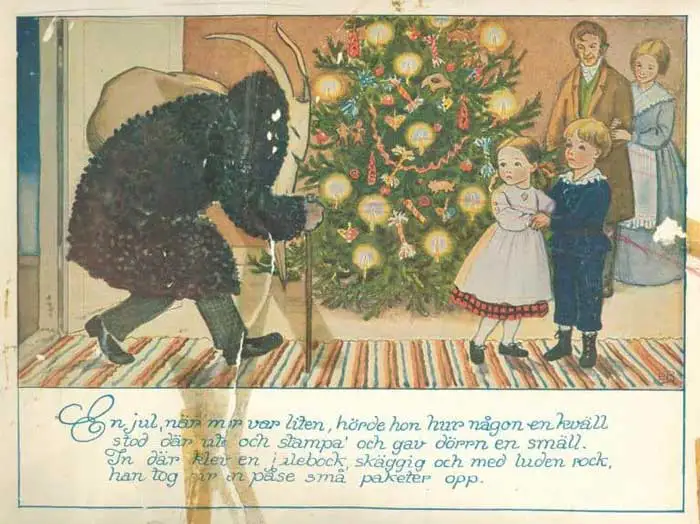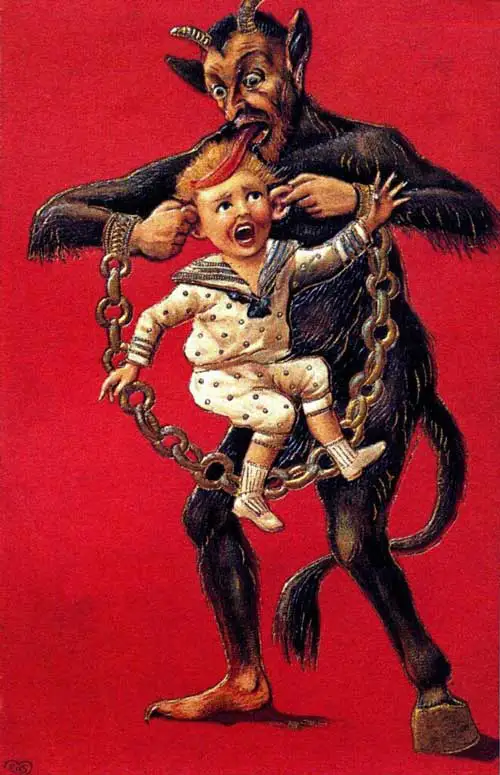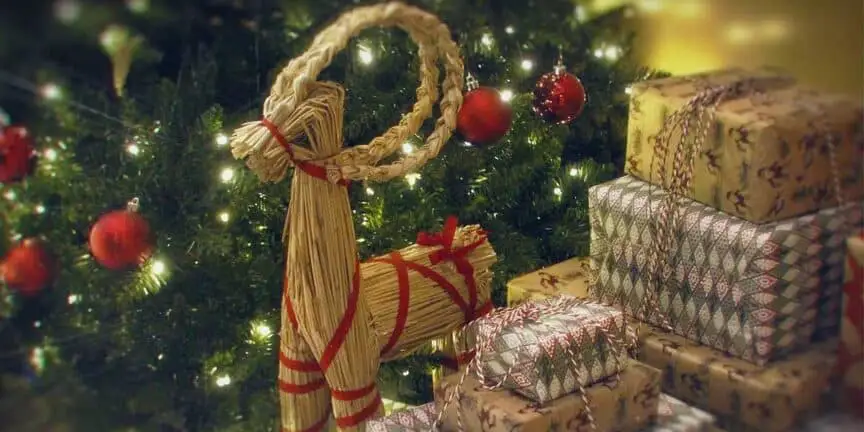In Scandinavia, we have many old Yule traditions, including the Yule goat. We call this decoration a “julebuk” in Danish and a “julbock” in Swedish. Often used as a decoration during December, the Yule goat is a simply made decoration. We make it by forming hay into a goat and binding it together with a bunch of red ribbons.
The Yule goat tradition most likely started in Scandinavia and then moved further south to other parts of Northern Europe, such as Poland. It is common that traditions like this spread to other societies with trade and population movement.
Ancient Roots and Mythological Ties of the Yule Goat
The origin of the Yule goat is uncertain, but it appears to have roots in paganism. It has been a tradition throughout large parts of Scandinavia for many decades, especially popular in Sweden and Denmark.
I believe this might be because the Yule goat tradition seems to have origins in the old Viking countries—Denmark, Norway, and Sweden. Historical evidence suggests that the Yule goat is a symbol of Norse paganism, likely connected to traditions that stretch back thousands of years when paganism was the most common faith in northern Europe.
The god associated with this goat is Thor, the god of thunder and one of the most powerful gods in the ancient religion known by many names, but most commonly called Asatru (Old Norse: Ásatrú).
Thor has two goats named Tanngrisnir (Teeth-barer) and Tanngnjóstr (Teeth-grinder) who always accompany him and pull his chariot across the sky.
One of the Nordic sagas specifically mentioning Thor’s goats is the saga of Thor’s and Loki’s journey to the land of the giants. On their journey, they stop at the house of a poor farmer and his family for the night. Unable to provide food, Thor kills his two goats, cooks their meat, and places it into a pot. The next morning, Thor uses his hammer, Mjolnir, to bring the goats back to life.
This saga might be the origin of the Yule goat tradition. It could have started with the sacrifice of a goat and using its fur and skull to dress up as a goat. Thor, known for his bad temper, combining his temper with insults while dressed as a goat, could have been a fun activity during Yule.
Records from the 17th century indicate that the Yule goat was one of the most festive events during Yuletide, at a time when most of the population lived in small villages and worked as farmers.

From Farmhand Folly to Festive Icon
A Danish farm servant, known as a ‘gårdskarl,’ would dress in a white sheet and secure a goat skull on his head. Bursting into living rooms, he’d knock over furniture, shout insults, and speak both lies and sometimes uncomfortable truths known at the Yule party.
The better the performance of the Yule goat, the more he was rewarded with beer and treats. Once satisfied with beer and done with his antics, he would stumble back out into the cold, snowy streets.
In certain Scandinavian regions, the Yule goat also brought small gifts for children at these parties. People welcomed this figure not just for entertainment, but also for the fertility and luck it was believed to bring to the household for the upcoming year.
Over time, this vibrant tradition has transformed into a quieter, more innocent form. Today, the Yule goat is typically a decoration made from hay, bound with red ribbons, and used around homes or greeting guests at the door during the Yule season.
Yet, in some parts of Scandinavia, the Yule goat remains more than just a decoration. Pagans often attach small messages with personal wishes for the new year to the goat before it is sacrificed in a bonfire. Fire, like the Yule goat, remains a significant element during this season.
Another related tradition is Julebukking, where people wear goat masks and walk around town, singing pagan songs with sinister undertones in the week leading up to New Year’s Eve, in stark contrast to traditional Christmas carols.
Goats also feature prominently in European paganism and ancient Proto-Slavic traditions, like the Koliada festival, which honors the harvest god Devac (also known as Dazbog), typically represented by a white goat.

Krampus
In the central European countries around southern Germany and Austria, they have a creature known as Krampus, which also has a pre-Christian origin.
Krampus is a half-goat, half-demon-like creature that roams the cities with torches at night, searching for homes with children. Detecting a child’s presence, he approaches the house, scratching his long, dark fingernails on the window. Once he spots a child inside, Krampus bursts through the door.
Inside, he punishes misbehaving children by whipping them or stuffing them into his bag to take them home, where he will eat them. However, if the children have been well-behaved throughout the year, he rewards them with gifts.
